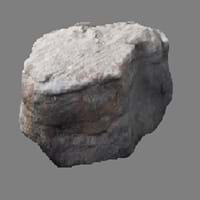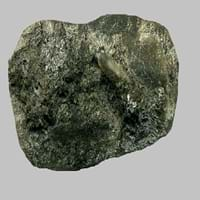Definition
Gritstone or grit is a hard, coarse-grained, siliceous sandstone
Kenyte is a variety of porphyritic phonolite or trachyte rock with rhomb shaped phenocrysts of anorthoclase with variable olivine and augite in a glassy matrix
Origin
Pennines, England
Mount Kenya
Discoverer
J.J. Ferber
J. W. Gregory
Etymology
From Grit + Stone
From the mountain ranges- Mount Kenya and is named by J. W. Gregory in 1900
Class
Sedimentary Rocks
Igneous Rocks
Sub-Class
Durable Rock, Hard Rock
Durable Rock, Medium Hardness Rock
Group
Not Applicable
Not Applicable
Other Categories
Coarse Grained Rock, Opaque Rock
Fine Grained Rock, Opaque Rock
Texture
Earthy
Glassy, Granular
Color
Beige, Black, Brown, Colourless, Cream, Dark Brown, Green, Grey, Light Green, Light to Dark Grey, Pink, Red, White, Yellow
Brown, Buff, Cream, Green, Grey, Pink, White
Durability
Durable
Durable
Scratch Resistant
Yes
Yes
Appearance
Layered and Foliated
Banded and Foilated
Interior Uses
Countertops, Decorative Aggregates, Homes, Interior Decoration
Decorative Aggregates, Entryways, Homes, Interior Decoration, Kitchens
Exterior Uses
As Building Stone, Garden Decoration, Office Buildings, Paving Stone
As Building Stone, Garden Decoration, Paving Stone
Other Architectural Uses
Curbing
Curbing
Construction Industry
Construction Aggregate, Roadstone
As Dimension Stone, Cement Manufacture, Construction Aggregate, for Road Aggregate, Landscaping, Making natural cement, Manufacture of Magnesium and Dolomite Refractories, Production of Glass and Ceramics
Medical Industry
Not Yet Used
Not Yet Used
Antiquity Uses
Artifacts, Monuments, Sculpture
Artifacts, Monuments, Sculpture
Commercial Uses
An Oil and Gas Reservoir, As a Feed Additive for Livestock, Gemstone, Metallurgical Flux, Production of Lime, Soil Conditioner, Source of Magnesia (MgO), Tombstones
Cemetery Markers, Creating Artwork
Types
Not Available
Not Available
Features
Available in Lots of Colors and Patterns, Generally rough to touch, Very fine grained rock
Application of acids on the surface causes cloudy frosting, Available in Lots of Colors and Patterns, Dissolves in hydrochloric acid, Is one of the oldest rock
Archaeological Significance
Famous Monuments
Data Not Available
Data Not Available
Famous Sculptures
Data Not Available
Data Not Available
Pictographs
Not Used
Used
Petroglyphs
Not Used
Used
Formation
Gritstone is a type of sedimentary rock which was formed on the floors of wide river deltas where the grit deposits were laid down, with every tide or flood dumping another layer of sediment.
Kenyte is a fine-grained, hard rock which is a type of metasomatite, essentially altered basalt. It forms with or without crystallization, either below the surface as intrusive rocks or on the surface as extrusive rocks.
Mineral Content
Calcite, Clay Minerals, Feldspar, Micas, Quartz
Albite, Amphibole, Biotite, Cancrinite, Feldspar, Hornblende, Plagioclase, Pyroxene, Sodalite
Compound Content
Aluminium Oxide, CaO, Iron(III) Oxide, Potassium Oxide, MgO, Sodium Oxide, Silicon Dioxide
Aluminium Oxide, CaO, Iron(III) Oxide, FeO, Potassium Oxide, MgO, MnO, Sodium Oxide, Phosphorus Pentoxide, Silicon Dioxide, Titanium Dioxide
Types of Metamorphism
Not Applicable
Burial Metamorphism, Cataclastic Metamorphism, Impact Metamorphism
Types of Weathering
Biological Weathering, Chemical Weathering, Mechanical Weathering
Biological Weathering
Types of Erosion
Chemical Erosion, Coastal Erosion
Chemical Erosion, Coastal Erosion
Grain Size
Coarse Grained
Fine Grained
Fracture
Conchoidal
Conchoidal to Uneven
Streak
White
White, Greenish White or Grey
Porosity
Highly Porous
Highly Porous
Luster
Dull
Greasy to Dull
Toughness
Not Available
Not Available
Specific Gravity
2.250
2.6
Transparency
Opaque
Translucent to Opaque
Density
2.2 g/cm3
2.6 g/cm3
Specific Heat Capacity
Not Available
Resistance
Heat Resistant, Impact Resistant, Pressure Resistant
Heat Resistant, Impact Resistant, Wear Resistant
Deposits in Eastern Continents
Asia
China, India, Kazakhstan, Mongolia, Russia, Uzbekistan
Indonesia, Iran, Russia, Saudi Arabia, Sri Lanka, Taiwan, Thailand, Turkey, Turkmenistan, Vietnam
Africa
Namibia, Nigeria, South Africa
Angola, Egypt, Madagascar, Namibia, Nigeria, South Africa
Europe
Austria, Denmark, Germany, Great Britain, Netherlands, Poland, Sweden, Switzerland, United Kingdom
Andorra, Finland, France, Germany, Great Britain, Italy, Norway, Portugal, Spain, Sweden
Others
Greenland
Greenland
Deposits in Western Continents
North America
Canada, USA
Canada, USA
South America
Brazil
Brazil, Chile, Colombia, Uruguay, Venezuela
Deposits in Oceania Continent
Australia
New South Wales, New Zealand, Western Australia
New Zealand, Queensland, South Australia, Tasmania, Western Australia
All about Gritstone and Kenyte Properties
Know all about Gritstone and Kenyte properties here. All properties of rocks are important as they define the type of rock and its application. Gritstone belongs to Sedimentary Rocks while Kenyte belongs to Igneous Rocks.Texture of Gritstone is Earthy whereas that of Kenyte is Glassy, Granular. Gritstone appears Layered and Foliated and Kenyte appears Banded and Foilated. The luster of Gritstone is dull while that of Kenyte is greasy to dull. Gritstone is available in beige, black, brown, colourless, cream, dark brown, green, grey, light green, light to dark grey, pink, red, white, yellow colors whereas Kenyte is available in brown, buff, cream, green, grey, pink, white colors. The commercial uses of Gritstone are an oil and gas reservoir, as a feed additive for livestock, gemstone, metallurgical flux, production of lime, soil conditioner, source of magnesia (mgo), tombstones and that of Kenyte are cemetery markers, creating artwork.










